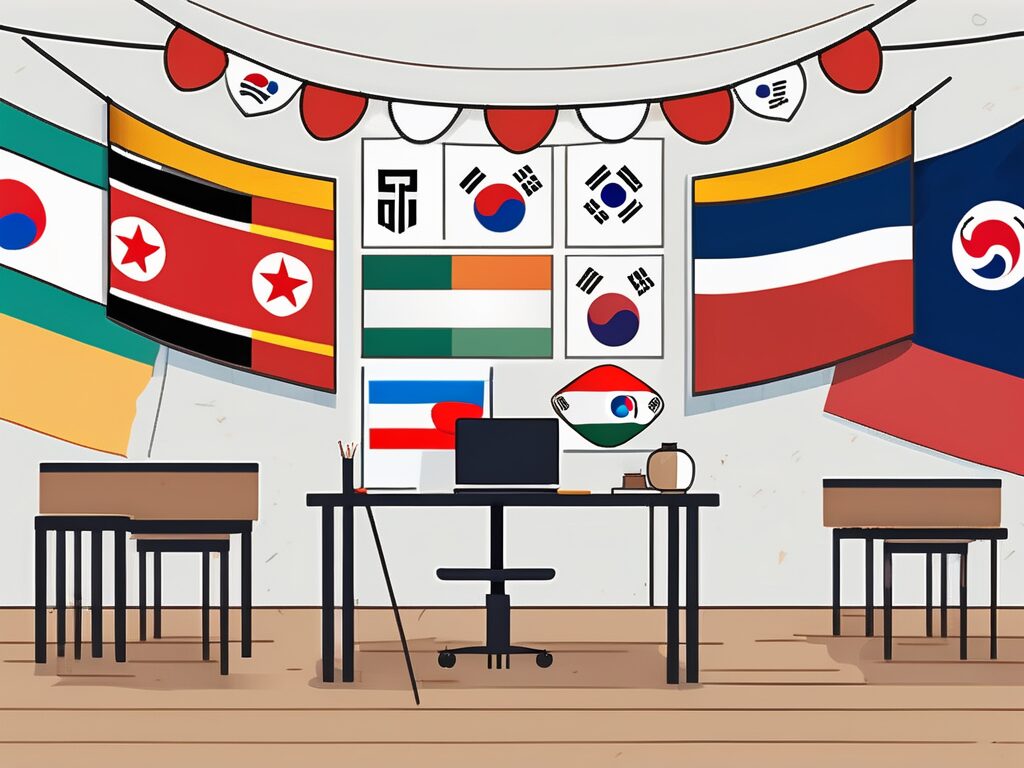South Korea, a country known for its rich culture and technological advancements, is increasingly becoming a melting pot of various cultures. This multiculturalism is reflected in its classrooms, presenting a unique set of challenges for educators and students alike. From language barriers to cultural differences, these challenges require innovative solutions to ensure an inclusive and effective learning environment.
Language Barriers
The Challenge of Multilingualism
One of the most significant hurdles in multicultural classrooms is the language barrier. South Korea, predominantly a monolingual society, is grappling with the influx of students from diverse linguistic backgrounds. This diversity, while enriching, can pose a challenge in a classroom setting where Korean is the primary language of instruction.
Imagine being a student trying to grasp complex mathematical concepts or understand historical events, but the language of instruction is foreign to you. It’s like trying to solve a puzzle with missing pieces. The situation is equally challenging for teachers who have to ensure that all students, regardless of their linguistic background, understand the lessons.
Overcoming Language Barriers
One solution to this challenge is implementing bilingual education programs. Similar to the model used in Canada, where English and French are used for instruction, South Korean schools could adopt a dual-language approach. This would not only help non-Korean speaking students but also provide an opportunity for Korean students to learn a new language.
Another strategy is the use of technology. With advancements in translation software and language learning apps, these tools can be integrated into the classroom to facilitate communication and understanding. Think of it as having a personal translator at your fingertips, breaking down the language barrier one word at a time.
Cultural Differences
The Challenge of Diverse Cultures
Another challenge in multicultural classrooms is the wide array of cultural backgrounds. Each culture comes with its own set of values, traditions, and social norms. In a South Korean classroom, where Confucian values of respect for authority and group harmony are prevalent, integrating students from cultures with different values can be a delicate balancing act.
For example, in Western cultures, students are often encouraged to express their opinions and engage in debates. This can be in stark contrast to the more reserved and group-oriented dynamics in South Korean classrooms. These differences can lead to misunderstandings and conflicts if not properly addressed.
Embracing Cultural Diversity
One way to navigate these cultural differences is through cultural exchange programs within the school. These programs can provide a platform for students to share their cultures, fostering understanding and respect. It’s like taking a world tour without leaving the classroom, where each student becomes an ambassador of their culture.
Another approach is incorporating multicultural education in the curriculum. This involves teaching students about different cultures, their histories, and contributions to society. It’s akin to viewing the world through different lenses, broadening students’ perspectives and promoting cultural sensitivity.
Social Integration
The Challenge of Social Inclusion
Social integration is another challenge in multicultural classrooms. Students from different cultural backgrounds may feel isolated or excluded due to language barriers or cultural differences. This can affect their academic performance and overall well-being. It’s like being at a party where everyone else knows each other, and you’re the only stranger.
Promoting Social Integration
Creating a welcoming and inclusive classroom environment is crucial in promoting social integration. This can be achieved through team-building activities and group projects that encourage interaction among students. It’s like building a bridge that connects different islands, fostering a sense of community and belonging.
Moreover, schools can provide support services such as counselling and mentoring programs for students who may need extra help in adjusting to their new environment. These services can serve as a safety net, providing the necessary support to ensure that no student falls through the cracks.
Conclusion
Challenges in multicultural classrooms in South Korea, while significant, are not insurmountable. With innovative solutions and a commitment to inclusivity, these challenges can be transformed into opportunities for growth and learning. After all, diversity is not just about differences but also about harnessing these differences to create a richer and more vibrant learning environment.
So, whether it’s breaking down language barriers, navigating cultural differences, or promoting social integration, the key is to embrace the diversity that each student brings to the classroom. Because at the end of the day, it’s not just about teaching students, it’s about preparing them for a multicultural world.
Take Your Teaching Career to the Next Level with IPGCE
As you navigate the complexities of multicultural classrooms in South Korea, consider enhancing your qualifications with the International Postgraduate Certificate in Education (iPGCE). This Level 7 programme is designed to support educators like you in achieving greater success in diverse educational settings. By joining the UK’s #1 Teacher Training Course, you’ll not only increase your chances of securing international teaching positions by 50% but also open doors to career advancement and salary increases. Embrace the opportunity to connect with a global network of professionals, gain a deeper understanding of international curricula, and balance your professional development with your current commitments. Join the iPGCE programme today and prepare yourself for a multicultural world with confidence and competence.

